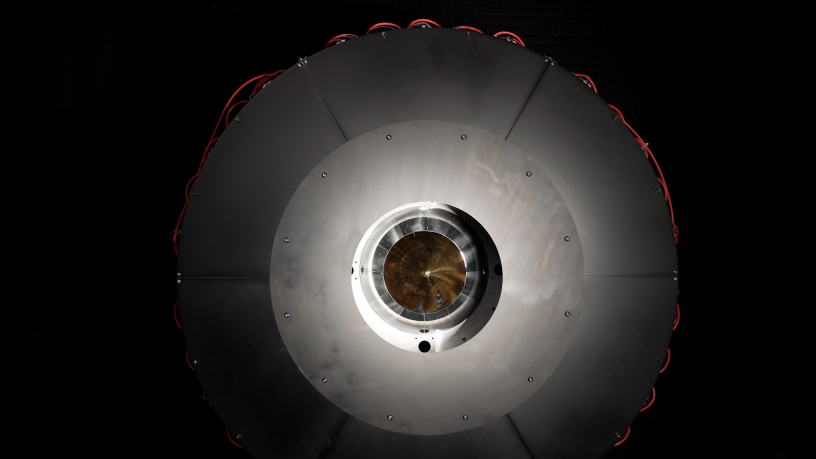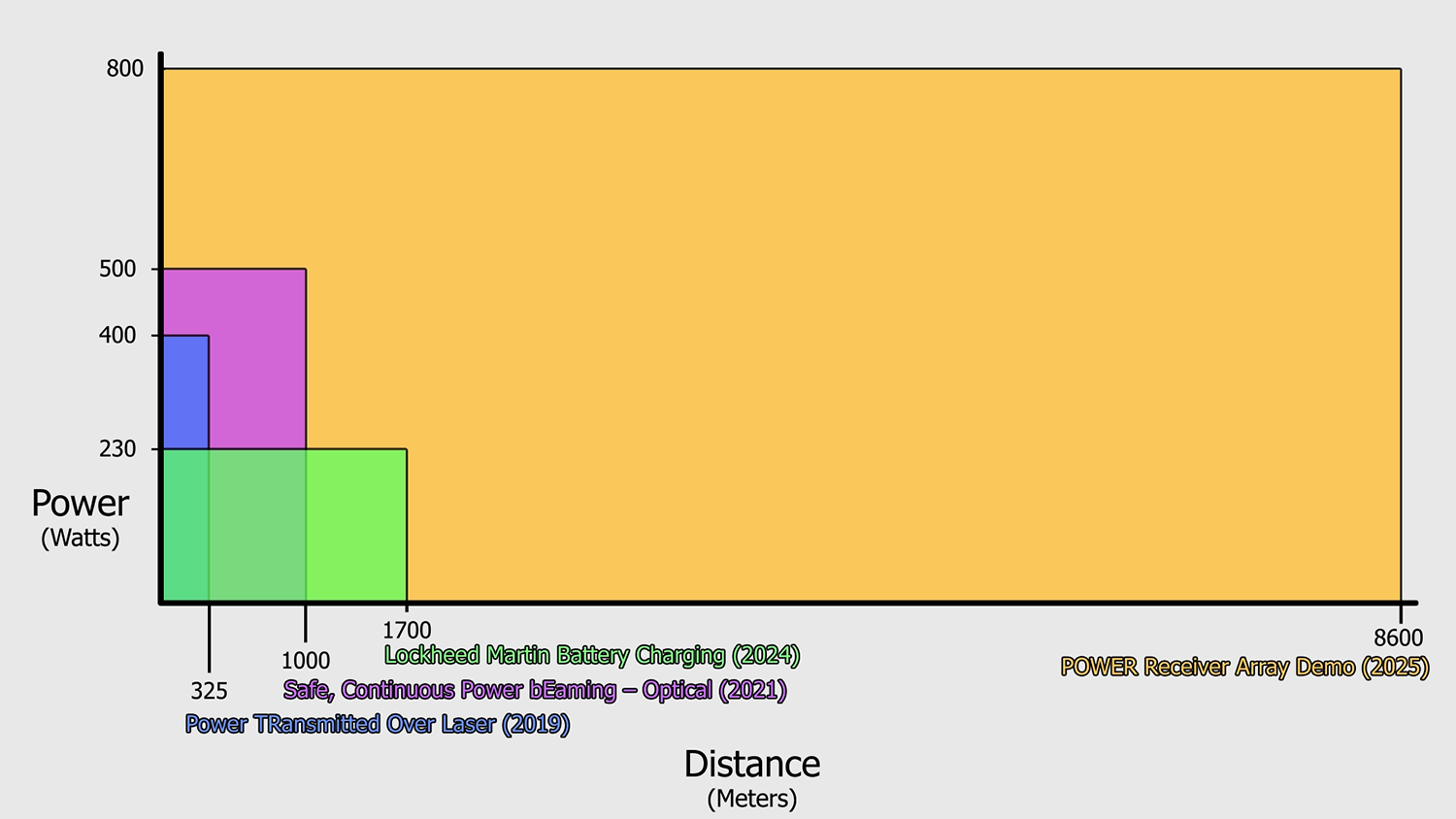Successful demonstration of new receiver technology is important step for revolutionizing power delivery at the edge

May 16, 2025
In a series of recent tests in New Mexico, the Persistent Optical Wireless Energy Relay (POWER) program achieved several new records for transmitting power over distance. The team recorded more than 800 watts of power delivered during a 30-second transmission from a laser 8.6 kilometers (5.3 miles) away. Over the course of the test campaign, more than a megajoule of energy was transferred.
Previously, the greatest reported distance records for an appreciable amount of optical power (>1 microwatt) were 230 watts of average power at 1.7 kilometers for 25 seconds and a lesser (but undisclosed) amount of power at 3.7 kilometers.

“It is beyond a doubt that we absolutely obliterated all previously reported optical power beaming demonstrations for power and distance,” said POWER Program Manager Paul Jaffe after the results were confirmed. The DARPA-led team brought together industry and government, including the U.S. Naval Research Laboratory and the High Energy Laser Systems Test Facility (HELSTF) at the U.S. Army’s White Sands Missile Range.

Energy is a fundamental requirement for military operations, and traditional means of getting energy to the edge (battlefields, disaster zones, etc.) are often incredibly slow, risky, and resource intensive. These tests, referred to as PRAD (POWER Receiver Array Demo), mark an important step towards the POWER program’s long-term goal of being able to instantly beam power from a location where it can be easily generated to wherever it’s needed, opening a novel design space for platform capabilities unbounded by fuel limitations.
To achieve the power and distance record, PRAD used a new receiver technology with a compact aperture for the laser beam to shine into, ensuring very little light escapes once it has entered the receiver. Inside the receiver, the laser strikes a parabolic mirror that reflects the beam onto dozens of photovoltaic cells (a.k.a. “solar cells”) to convert the energy back to usable power.
The receiver was designed by Teravec Technologies, led by principal investigator Raymond Hoheisel, with support from Packet Digital and the Rochester Institute of Technology. The technology is scalable to higher power levels and can be integrated into different platforms, such as unmanned aerial vehicles (UAVs), to support the long-term needs of the POWER program.
For the tests, both the transmitter and receiver were on the ground, which required the beam to go through the thickest part of the atmosphere, making the test results even more impressive.
“It’s a lot easier to send a power beam directly up or down relative to the ground because there is so much less atmosphere to fight through,” Jaffe explains. “For PRAD, we wanted to test under the maximum impact of atmospheric effects.”
While efficiency wasn’t the focus of this demonstration, the team measured more than 20% efficiency from the optical power out of the laser to the electrical power out of the receiver at shorter distances. The goal of the effort was to rapidly validate the capability of a new design to massively extend potential distance, so trade-offs were made to accelerate the design and build of the test receiver. The receiver was completed in about three months.
“This demonstration broke through misconceptions about the limits of power beaming technology, and it is already spurring industry to reimagine what’s possible,” said Jaffe.
With the PRAD testing successful, the POWER program has significantly reduced risk for a key element of making long-distance power beaming a future reality. The program is now moving forward to demonstrate the benefits of integrated relays and vertical power transmission and is seeking the creativity and innovation of potential partners to accomplish this as part of POWER Phase 2.
A POWER Phase 2 Industry Day will be held on May 29, 2025. The Industry Day will promote teaming arrangements between researchers; provide potential performers with information on whether and how they might respond to government R&D solicitations; and increase efficiency in proposal preparation and evaluation. The Industry Day registration deadline is May 21.

